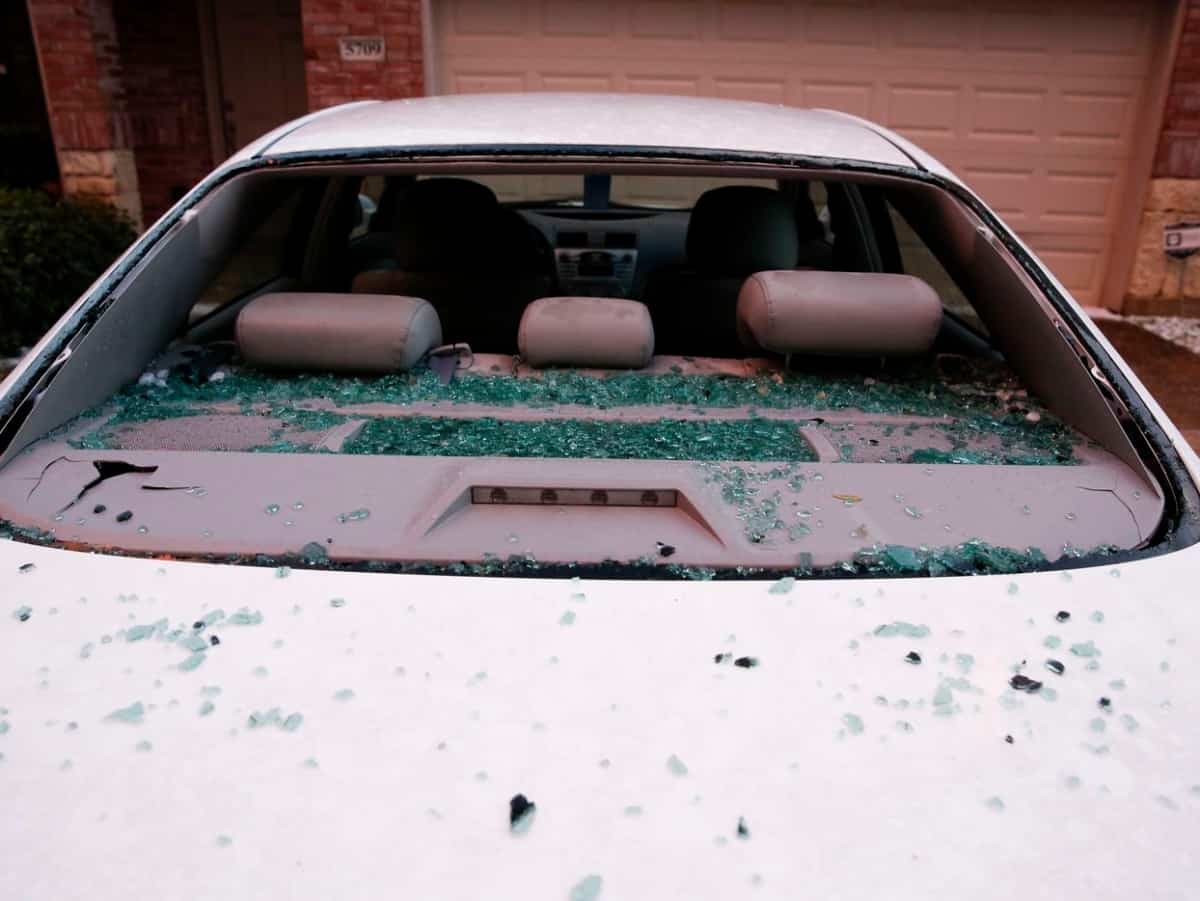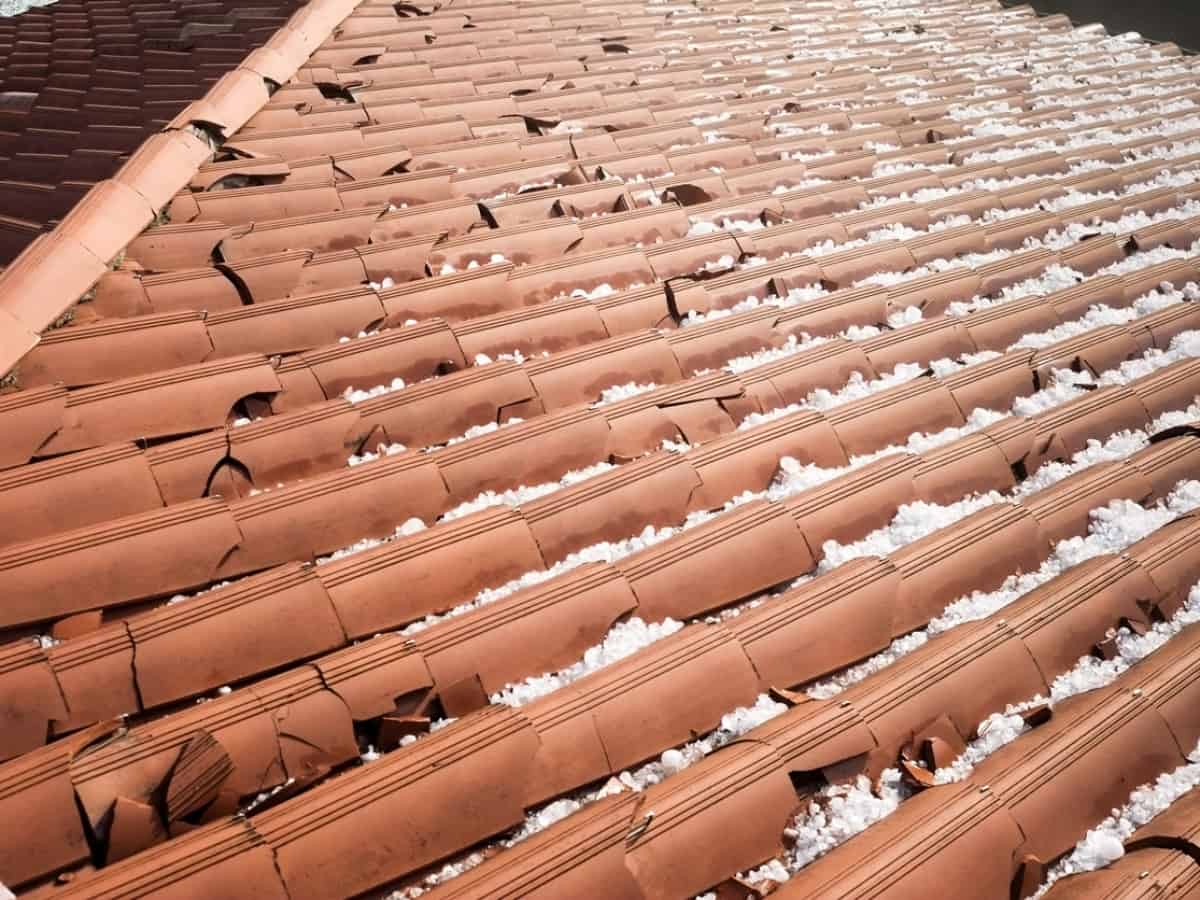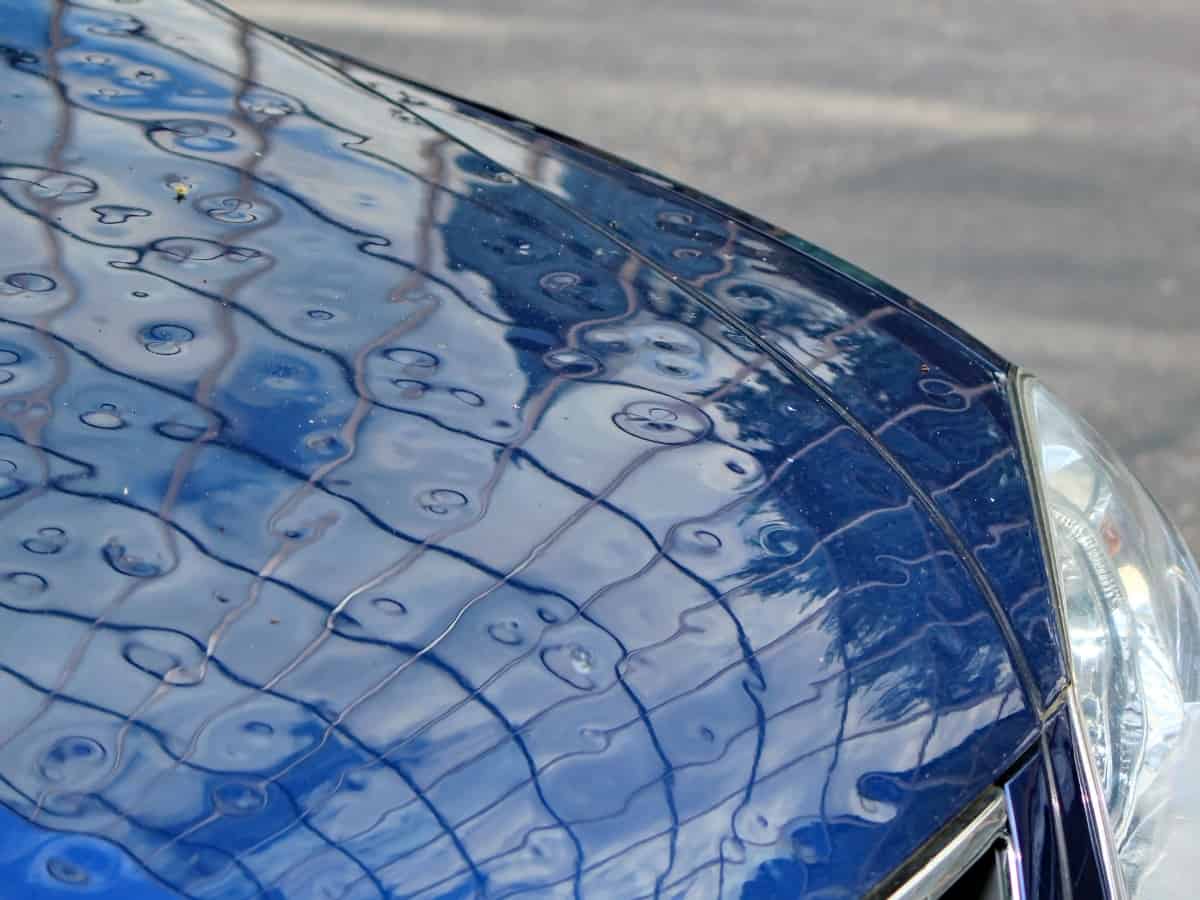It’s springtime in Texas, which means one thing: powerful and unpredictable storms. These powerful storms can produce high winds, powerful lightning, and hail the size of golf balls and larger. Hail damage is so common in Texas that it is considered a part of “Hail Alley” which extends through Oklahoma, Colorado, and North and South Dakota. But, does your insurance cover hail damage? Depending on your policy and where the damage occurred, your insurance might not cover it.
Hail Damage to Car
Powerful, hail-producing storms can leave your car with broken windows or windshields or dents, dings, and dimples. How do you know if your car is covered from hail damage? It all comes down to which kind of auto coverage you have.
Hail damage is covered by comprehensive coverage, as long as your policy starts before the damage occured.
Comprehensive Coverage
One policy option for car insurance is comprehensive coverage. Comprehensive coverage pays for the repair or replacement of a covered vehicle that has been stolen or damaged by an event other than a collision or roll-over. The covered damages include:
- Fire
- Wind
- Flood
- Theft
- Vandalism
- Falling objects
- Hitting an animal
- Hail
Therefore, hail damage is covered by comprehensive coverage, as long as your policy starts before the damage occured. The next step after the storm is to contact your insurance and report the claim as soon as possible. Then, your insurance carrier can talk you through the next steps that need to be taken for an estimate on repairs. There are some cases when the cost to repair is more than the car is worth, resulting in a totaled car.

Auto Liability Coverage
Auto liability coverage is required in most states, but unfortunately it does not cover incidents like hail damage.
The other form of car insurance is auto liability coverage. Auto liability coverage is required in most states, but unfortunately it does not cover incidents like hail damage. This coverage is for at-fault car accidents only. Therefore, if this is your current policy, you do not need to report it to your insurance.
If you live in an area that is common to damaging storms, consider switching to a comprehensive coverage instead as a precautionary measure. If you’re in an area that doesn’t have hail often, you can always buy a padded, hail-protection blanket, much like this example found on Amazon.
Tips for Keeping Your Vehicle Safe in a Hail Storm
- Keep Your Car in the Garage. If your home or rental property has a garage, keep your vehicle parked in that space until the storm passes. This is a great way to protect your car from dents or broken windows.
- Use Covered Parking. Some apartment complexes provide residents with covered parking at an additional expense. If you live in a city that’s likely to ensure a hail storm, investing in covered parking might be a great decision.
- Find a Parking Garage. This suggestion is most applicable if you’re already on the road during a hail storm. If you know there’s a parking garage nearby that you can use to seek temporary shelter and protect your car, drive there. However, we certainly don’t recommend driving long distances in a hail storm to reach a parking garage. Always seek shelter at the closest location. We also don’t recommend leaving your home to park your car somewhere covered during a hail storm.
Finally, hail storms can often leave the roads icy and troublesome to drive on. Check out our guide with 10 simple tips for driving in the snow.

Hail Damage to Your Home
Hail damage is usually covered through hazards insurance, under a dwelling protection coverage.
Luckily, most home insurance policies cover hail damage as part of structural damage. In fact, hail related damage accounts for 70% of home insurance claims. The structural damage includes the roof, windows, attached garage, appliances, porch or deck. There are additional policies for detached parts of your home, such as a detached garage or tool shed.
Hail damage is usually covered through hazards insurance, under a dwelling protection coverage. The dwelling protection coverage helps pay for the repairs and rebuilding of physical damage to your home and anything attached to your home, as long as it was named peril that damaged it.
However, policies vary and hail might not be a named peril on your insurance. If you’re not sure whether or not sure whether or not your home insurance covers weather related damages, make sure to read up on your current policy. Like auto insurance, it’s important to remember that any policy changes made after the damage occured will not be covered by your insurance. Only structure damages made after your policy change will be covered.
Important Things to Remember About Damages
If you have experienced damage, there are some steps you can take before an insurance adjuster shows up. First, try not to interfere with the damage. It’s understandable to want to go clean up, but avoid this! The claims adjuster should assess damage as it occurred so you get the best quote possible.
Also, make sure to take pictures and videos to document any damages. Be thorough with your evidentiary footage as this can also help with gaining the appropriate quote amount. Taking pictures builds your case if you are given an inappropriate quote and believe the damages cost more. If this still does not work, consider going with a third-party contractor or claims adjuster if it is more cost effective in the long run.




